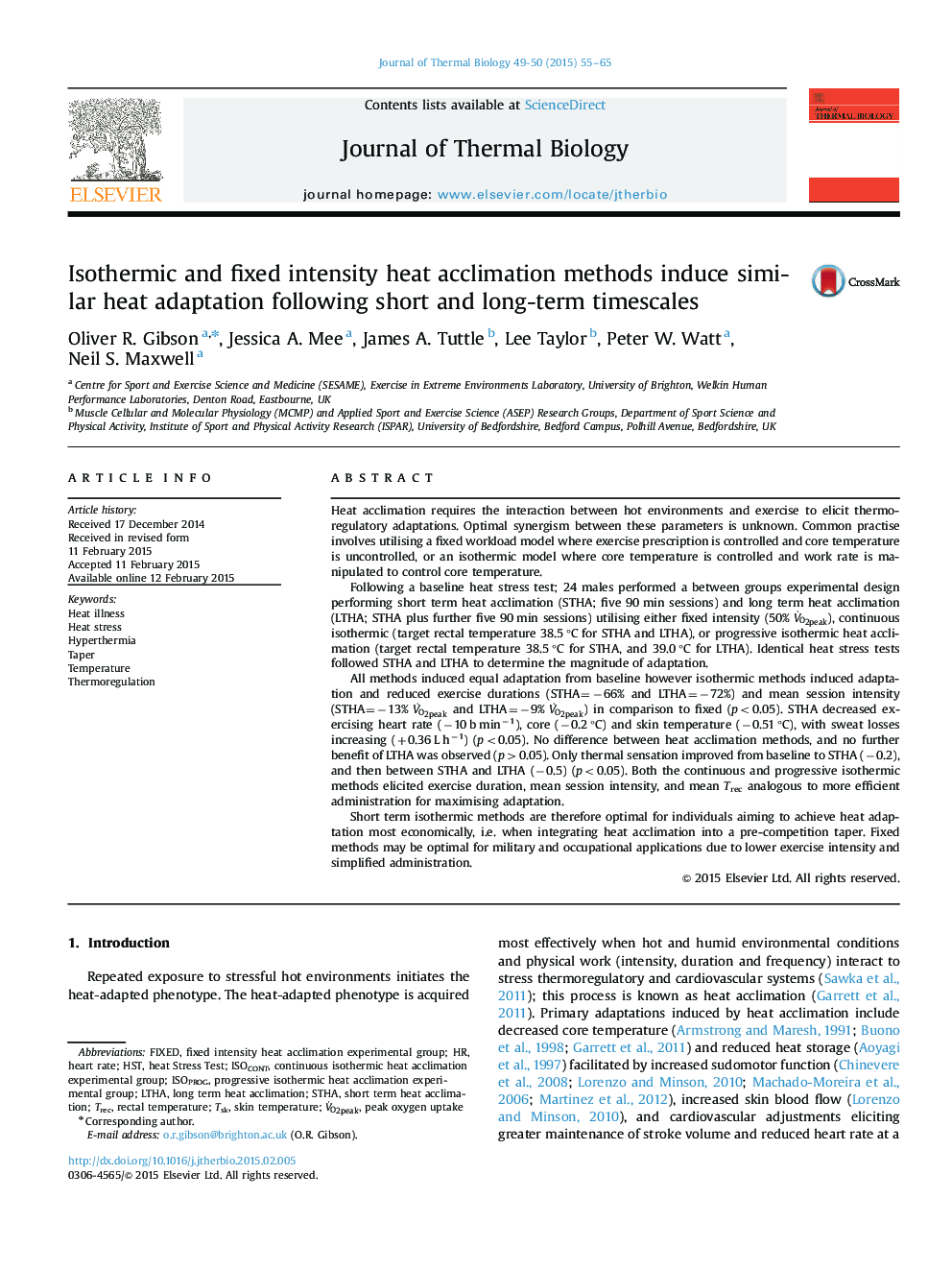| کد مقاله | کد نشریه | سال انتشار | مقاله انگلیسی | نسخه تمام متن |
|---|---|---|---|---|
| 2842758 | 1571096 | 2015 | 11 صفحه PDF | دانلود رایگان |
• Isothermic and fixed intensity heat acclimation methods elicit equal adaptation.
• Isothermic heat acclimation is more appropriate for athletes due to more efficient procurement.
• Progressive increases in target core temperature do not increase the extent of adaptation.
Heat acclimation requires the interaction between hot environments and exercise to elicit thermoregulatory adaptations. Optimal synergism between these parameters is unknown. Common practise involves utilising a fixed workload model where exercise prescription is controlled and core temperature is uncontrolled, or an isothermic model where core temperature is controlled and work rate is manipulated to control core temperature.Following a baseline heat stress test; 24 males performed a between groups experimental design performing short term heat acclimation (STHA; five 90 min sessions) and long term heat acclimation (LTHA; STHA plus further five 90 min sessions) utilising either fixed intensity (50% V̇O2peak), continuous isothermic (target rectal temperature 38.5 °C for STHA and LTHA), or progressive isothermic heat acclimation (target rectal temperature 38.5 °C for STHA, and 39.0 °C for LTHA). Identical heat stress tests followed STHA and LTHA to determine the magnitude of adaptation.All methods induced equal adaptation from baseline however isothermic methods induced adaptation and reduced exercise durations (STHA=−66% and LTHA=−72%) and mean session intensity (STHA=−13% V̇O2peak and LTHA=−9% V̇O2peak) in comparison to fixed (p<0.05). STHA decreased exercising heart rate (−10 b min−1), core (−0.2 °C) and skin temperature (−0.51 °C), with sweat losses increasing (+0.36 L h−1) (p<0.05). No difference between heat acclimation methods, and no further benefit of LTHA was observed (p>0.05). Only thermal sensation improved from baseline to STHA (−0.2), and then between STHA and LTHA (−0.5) (p<0.05). Both the continuous and progressive isothermic methods elicited exercise duration, mean session intensity, and mean Trec analogous to more efficient administration for maximising adaptation.Short term isothermic methods are therefore optimal for individuals aiming to achieve heat adaptation most economically, i.e. when integrating heat acclimation into a pre-competition taper. Fixed methods may be optimal for military and occupational applications due to lower exercise intensity and simplified administration.
Journal: Journal of Thermal Biology - Volumes 49–50, April–May 2015, Pages 55–65
